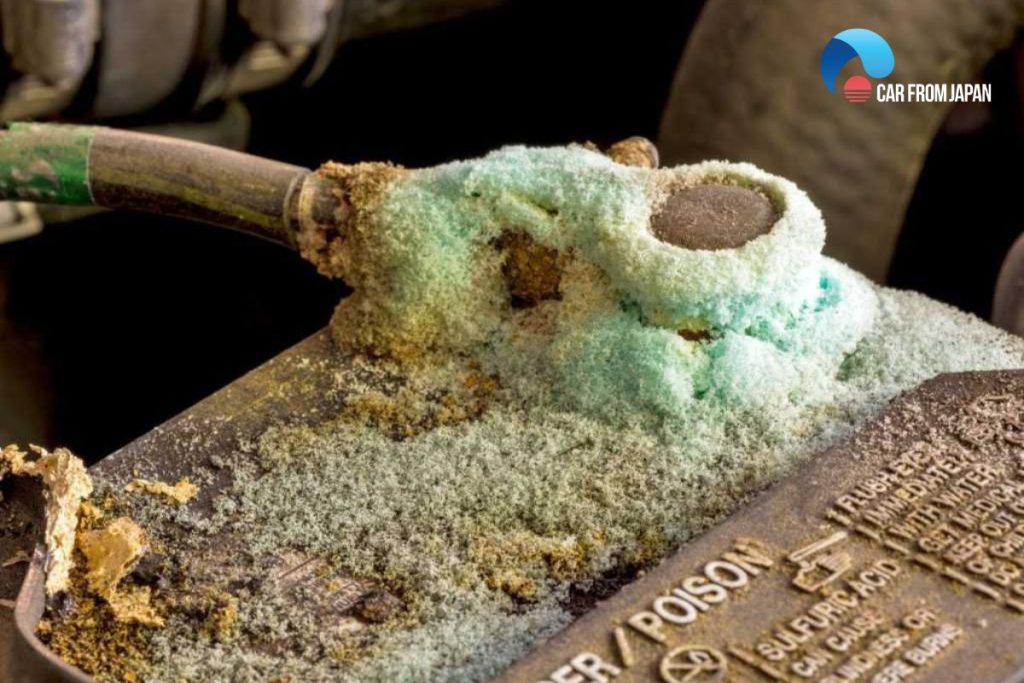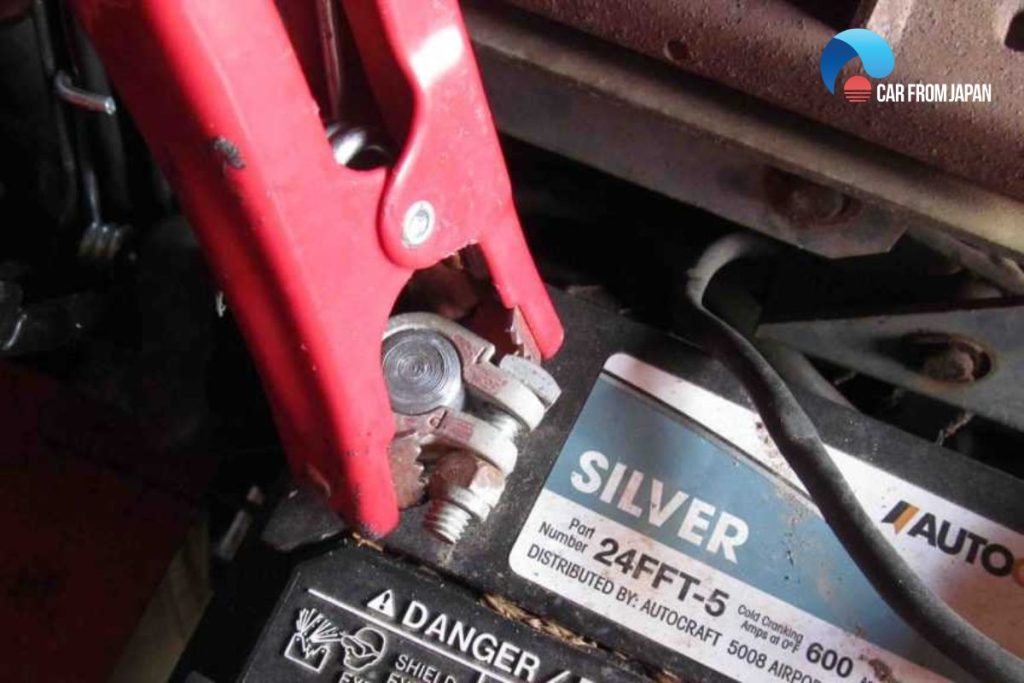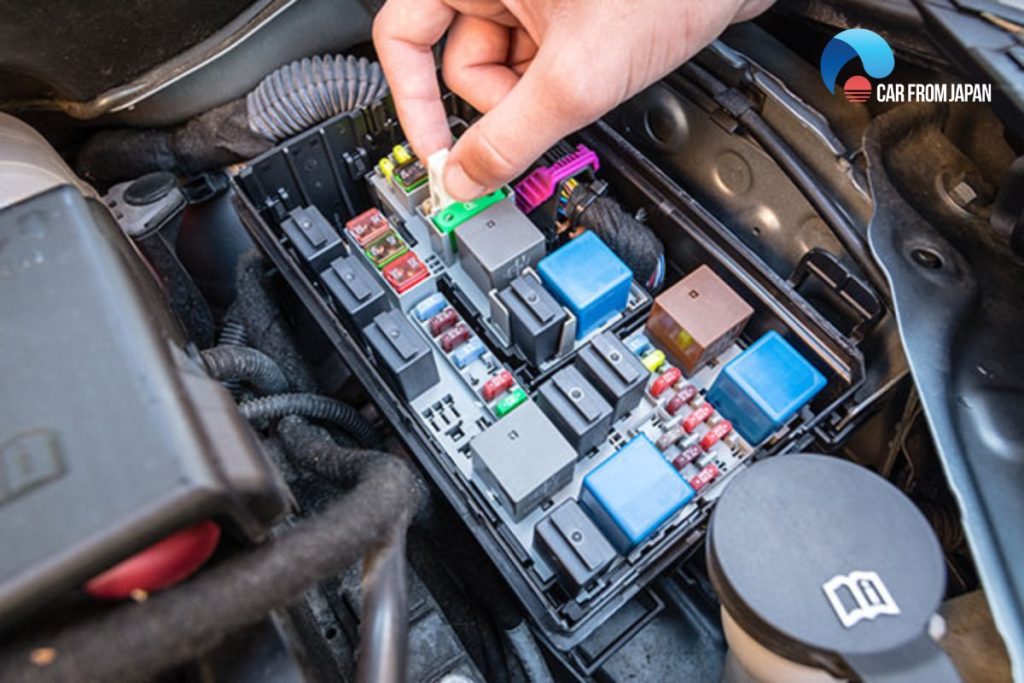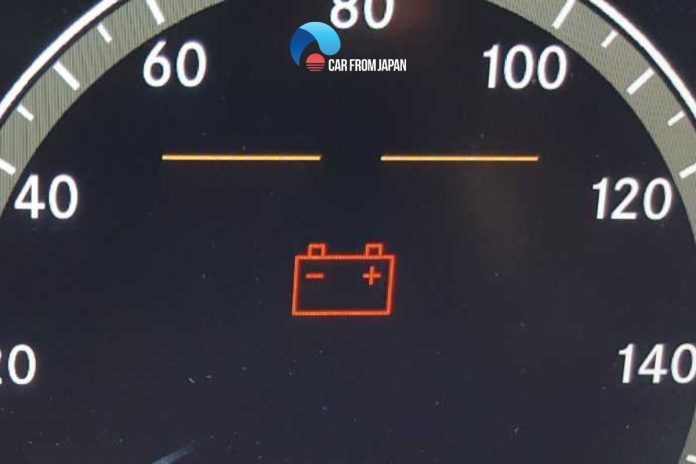One of the problems, which many car drivers face, is when the battery light on but alternator is charging.
Your car battery or charging light indicates a malfunction in the battery circuits or bad charging of the car battery. The light provides you with a warning when the charging system is not charging the battery with the right voltage.
However, the warning happens due to many reasons, so it is vital to take the proper steps to know the actual issue before trying to replace any components.
Contents
- Why Battery Light On But Alternator Is Charging?
- How To Prevent The Battery Light On But Alternator Is Charging?
- FAQs on Alternator Charging But Battery Light On
- Can I continue driving when the battery light is on?
- What should I do when the battery light is on but the alternator is charging?
- Can a weak battery cause the battery light to come on?
- Is it safe to drive with the battery light on intermittently?
- How can I tell if the battery light is indicating a serious issue or just a minor problem?
- Is it safe to jump-start a vehicle with the battery light on?
- Final Words
Why Battery Light On But Alternator Is Charging?
In case the battery light stays on when you start the car, do not worry. It is usual for the light to power on when you turn the ignition to your vehicle.
Usually, the light turns off after some time, but if it stays on even when you are driving, then pay attention.
You might notice some signs of a weak battery, including power windows not coming up, or the audio system not working.
Let’s perform a few checks to see where the problem lies.
Check for corrosion
In some car models, the fumes from the regular functions lead to corrosion to collect on the battery terminals.
It happens particularly during summer or during warm weather. We recommend you instead remove the covers from the terminals located on top of the car battery.
The presence of a white or greenish substance on the top of the battery or near the terminals is a clear case of corrosion. The corrosion can interrupt the conduction of electricity from the array to the car.
Remember not to touch the corrosion with bare hands, as it can lead to skin irritation. It is the first step to help you resolve battery light on but alternator is charging issue.

Clean the car battery terminals
If you notice some corrosion or grime around the battery terminals, it might be the reason why the car battery light is still on.
A significant advantage is that it is easy to clean the terminals using standard grease. What you need to do is remove it, remove the battery cables, and clean throughoutly.
Tighten the battery clamps
At times, the battery light remains on due to a weak connection between the car battery and the cables that connect to it.
Ensure the clamps fastened to the battery terminals. In case you notice the clamps are loose, then use a small wrench to tighten them until they completely cover the terminals.
The car battery is a vital component that provides the vehicle with the necessary power to run on the road.

Faulty voltage regulator
The voltage regulator controls the alternator’s output. A malfunctioning regulator might overcharge or undercharge the battery, causing the light to illuminate even if the alternator is producing some current.
The voltage may fluctuate erratically, leading to an illuminated warning light.
Wiring issues
Damaged or corroded wiring in the charging circuit can disrupt the flow of current between the alternator, battery, and the rest of the electrical system.
This can cause voltage drops and trigger the battery light, even if the alternator is functioning correctly.
Check the wiring connections at the alternator, battery, and related components to find the root causes for the battery light on but alternator is charging issue.
Read More: The Comprehensive Guide to Removing Car Battery Without Any Hassle
How To Prevent The Battery Light On But Alternator Is Charging?
Preventing the battery light on but alternator charging scenario requires maintaining a healthy charging system and actively addressing potential issues.
Regularly inspect and clean terminals
Corrosion on your battery terminals acts as an insulator, disrupting the flow of current between the battery and the rest of the electrical system, including the alternator. This can lead to voltage drops and trigger the battery light even if the alternator is charging.
Make it a habit to inspect your battery terminals regularly, ideally every few months. If you see any signs of corrosion (a white, powdery buildup), clean the battery terminals with a wire brush and a mixture of baking soda and water.
Rinse thoroughly and dry the terminals before reconnecting them, ensuring they are tightly fastened. Applying a protective coating or dielectric grease can help prevent future corrosion.

Have the battery tested periodically
Car batteries have a limited lifespan, typically lasting between three and five years. As a battery ages, its ability to hold a charge diminishes, which can lead to voltage fluctuations and trigger the battery light, even if the alternator is functioning correctly.
To avoid unexpected starting problems and potential charging system issues, have your battery tested annually or more frequently if you notice signs of weakness, such as slow cranking or dimming headlights.
A simple load test at most auto parts stores can quickly determine the health of your battery.
Maintain wiring and connections
The charging system relies on a network of wires and connections to transfer current between the alternator, battery, and various electrical components.
Damaged, loose, or corroded wiring can disrupt this flow, causing voltage drops and potentially triggering the battery light.
Periodically inspect the wiring and connections in the charging system, paying close attention to the wires connected to the alternator, battery, and voltage regulator.
Look for any signs of fraying, cracking, or corrosion. Repair or replace any damaged components promptly to ensure a reliable charging system.
Monitor voltage
Using a multimeter to monitor your charging system voltage can help you identify potential problems early on. With the engine running, a healthy charging system should maintain a voltage between 13.5 and 14.5 volts.
If the voltage reads significantly lower or higher than this range, it could indicate a problem with the alternator, voltage regulator, or other components in the charging system.
Regularly checking the voltage, perhaps every few months, can help you catch issues before they escalate.
Address warning signs promptly
Pay attention to any warning signs that could indicate a charging system problem. Dimming headlights, flickering interior lights, or slow cranking can all be signs of a failing battery or a charging system issue.
Don’t ignore these warnings. Addressing them promptly can prevent more serious problems and potentially save you from being stranded with a dead battery.
Use a battery maintainer
If you don’t drive your vehicle frequently, especially in colder climates, the battery can slowly discharge over time. This can shorten the battery’s lifespan and potentially lead to starting problems.
Using a battery maintainer, also known as a trickle charger, can help prevent this by providing a small current to keep the battery fully charged.
This is particularly beneficial for classic cars, seasonal vehicles, or any vehicle that sits unused for extended periods.
Avoid overloading the electrical system
Running multiple electrical accessories simultaneously, especially when the engine is idling, can put a significant strain on the charging system.
While modern alternators are designed to handle a reasonable load, excessive use of power-hungry devices like heated seats, high-powered audio systems, or aftermarket lighting can overtax the system and potentially lead to problems.
Be mindful of your electrical consumption, especially at low engine speeds, to avoid overloading the charging system.

FAQs on Alternator Charging But Battery Light On
Can I continue driving when the battery light is on?
While you can continue driving for a short distance when the battery light is on, it’s not advisable.
The light warns of a potential issue in the charging system, and ignoring it can lead to a dead battery and a stalled vehicle.
What should I do when the battery light is on but the alternator is charging?
If the battery light is on while the alternator is charging, it’s essential to have the vehicle inspected by a qualified mechanic.
They can diagnose the specific issue, which may involve testing the battery, alternator, voltage regulator, and electrical connections.
Can a weak battery cause the battery light to come on?
Yes, a weak or failing battery can trigger the battery light. If the battery can’t hold a charge properly, the alternator may work harder to compensate, leading to the warning light.
Is it safe to drive with the battery light on intermittently?
Driving with the battery light on intermittently is not recommended. Even if the light goes off temporarily, it indicates an underlying issue that needs attention.
Continuing to drive could lead to a breakdown or further damage to the electrical system.
Always have the vehicle inspected when the battery light comes on, even if it goes off later.
How can I tell if the battery light is indicating a serious issue or just a minor problem?
Determining the severity of the issue behind the battery light can be challenging without proper diagnosis.
It’s advisable not to assume the problem’s extent based solely on the light.
Is it safe to jump-start a vehicle with the battery light on?
Jump-starting a vehicle with the battery light on is generally safe as long as the battery is the primary issue.
However, it’s essential to diagnose and address the underlying problem after jump-starting to prevent further complications.
Check out this video from Leo Mafraji Motors to see why battery light on and whether you need a new alternator and battery!
Final Words
Apart from the issue of battery light on but alternator is charging, you might encounter quite a number of problems with your battery or your alternator that is causing your car to slow start.
Refer to these ultimate guides how to test a car battery with a multimeter and how to test an alternator to familiarize yourself, which you must, with these critical components in your vehicle.




continue giving us information in order to assist who might not knowing.